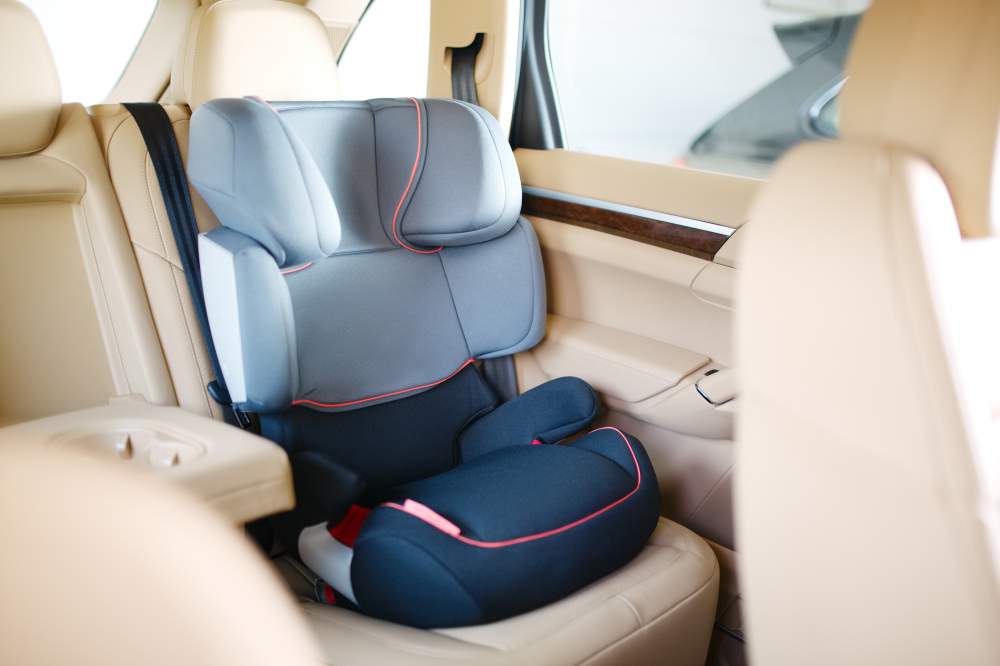
One of the first rites of parenthood is purchasing a car seat. There are different designs, styles, prices, and features. So, what do new parents need to know about car seat safety? What should you look for in a car seat?
Types of car seats
Different types of car seats will be appropriate for your child as he or she grows. Infant seats are almost always rear-facing and should be placed in the back seat. Vehicles with front airbags have been standard since 1998, and a deploying airbag would be extremely dangerous for an infant in a car seat. It is recommended that children be placed in rear-facing car seats until they are two years old and weigh more than 20 pounds.
Convertible car seats can be either rear- or forward-facing, so that when a child exceeds the age and weight requirements of needing to be in a rear-facing seat, the seat can be turned around and used as a forward-facing car seat.
Booster seats are used for children who have outgrown car seats, but still require additional restraint because of their size and weight. Typically, children should be in booster seats until they weigh more than 80 pounds and are taller than 4’ 9”.
There are two styles of booster seats, high-back and no-back boosters. A no-back booster provides a raised, cushioned seat, thereby resulting in better positioning of the seat belt across the child’s body. High back booster seats provide back and head support for the child, in addition to better seat belt placement. Many high back boosters also have removable back and head cushions, important for when the child grows and starts to develop an opinion and wants it removed because it looks “babyish” to the child. You can even find combination convertible, 5-point car seats that convert into a booster seat.
Sobering facts about car seats
The Centers for Disease Control and Prevention (CDC), which maintains statistics for motor vehicle safety, reports that one of the leading causes of death for children in the United States is motor vehicle accidents. In 2015, 633 children age 12 and younger died in vehicle crashes. One CDC study found that more than 618,000 children ages 12 and under rode in cars without some type of restraint system (like a car seat, booster seat, or seatbelt) at least some of the time. That is a risk no parent or caretaker should take — of those children ages 12 and under who died in car accidents in 2015, 35 percent were not restrained. The statistics supporting proper car seat use for infants and toddlers are compelling. The proper use of a car seat in a passenger vehicle with an infant reduces the chance of death by 71 percent; for toddlers (ages 1 to 4 years) the risk of death is reduced by 54 percent.

Other things to know about car seats
They expire! Yes, a car seat has a use-by date. These can vary by manufacturer, but generally speaking, car seats are good for approximately six years. In part, this is because some of the components, such as the plastic and foam, can degrade. Changing laws and regulations, and new findings on safety and engineering, are also good reasons to discard old car seats. Be cautious if you decide to purchase one second-hand.
Additionally, you may need to replace a car seat if it is in your vehicle in the event of a moderate or severe crash. Car seats are designed to perform in a single crash event. There is no way of knowing if the car seat’s safety design features were stressed in the accident — if so, they might be compromised and not perform properly in another crash. The National Highway Traffic Safety Administration (NHTSA) has details on what constitutes a minor crash versus a moderate or severe one.
Check your policy — some insurers may cover some or all of the cost of replacing a car seat in the event of a crash. A helpful tip is to save the receipts for your car and booster seats. If you do have the misfortune of experiencing a car accident, minor or severe, submit these receipts to your adjuster for reimbursement. The adjuster may not reimburse you the full amount because of depreciation, but you may want to consider replacing them and not risk having your child ride in a potentially defective seat.
The content on this site is offered only as a public service to the web community and does not constitute solicitation or provision of legal advice. This site should not be used as a substitute for obtaining legal advice from an insurance company or an attorney licensed or authorized to practice in your jurisdiction. You should always consult a suitably qualified attorney regarding any specific legal problem or matter. The comments and opinions expressed on this site are of the individual author and may not reflect the opinions of the insurance company or any individual attorney.







